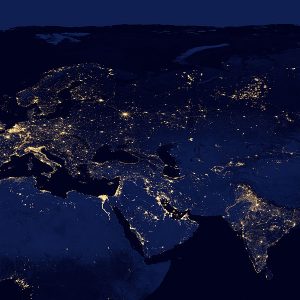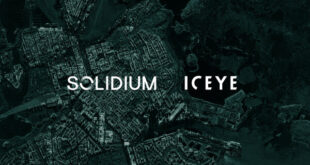
Asia is home to three established space powers – Japan, China and India – and there are several new players, some with rising aspirations of reaching the Moon, thus giving way to a new competition in Asia. The fact that six of the ten countries – China, India, Iran, Israel, Japan and North Korea – that have independently launched satellites into orbit are in Asia is reflective of this new trend. The space race in the twentieth century referred to the competition between the then two superpowers – the US and the Soviet Union. In more recent years, however, space has become highly competitive with more than 60 actors as of date, including non-state actors.
But, like in the past, with competition picking up, space is no longer seen from a peaceful perspective alone and the national security aspects of outer space use are gaining dominance, particularly in the Asian context. This is reflective of the shifting balance of power and the consequent competition for the Asian strategic space. The fact that Asia houses some of the fastest growing economies of the world has given a spurt to major arms acquisition and military modernisation. Outer space has become one more domain for the manifestation of this competition.
The transition in the global balance of power and the rise of Asia have unfortunately not been peaceful given that Asia is not a politically harmonious region. In addition to the baggage of history, Asia is characterised by conflicts around sovereignty and border and territorial issues. There is also the rise of nationalism that is accentuating some of these already vexed issues. Given that this is occurring at a time of global power transition, these issues are not going to be resolved in the foreseeable future.
Signs of Competition
China undertook its first manned space mission in October 2003, becoming the third after the US and the Soviet Union globally, and the first in Asia to independently achieve this feat. Japanese astronauts visiting the International Space Station (ISS) depend on American, and now Russian launch vehicles. The sole Indian astronaut to go to space was launched on a Soviet launch vehicle in 1984 to the latter’s space station.
This idea of launching astronauts is not a standalone achievement but is a part of China’s human space exploration programme that intends to construct and operate a space station in low earth orbit. It is planning to complete its construction by 2024 whereupon it could emerge as the sole operating space station, given the current uncertainty amongst ISS partners in funding that space station to 2024 and beyond. By offering access to its space station to fellow states, once built, China is trying to enhance its stakes and reputation in the international space technology arena.
Interestingly, the Russian and European space agencies have already established strong connections with China in this domain and have also conducted several experiments relating to human space exploration. The trio also share a commitment to return humans to the Moon, although these discussions are currently in the consultative stage. However, Chinese space scientists have declared working towards manned lunar landings by 2036, subject to the Chinese government’s approval. Such a feat would firm up China’s position in space exploration and will demonstrate a considerable leap compared to India and Japan.
Alarmingly, India and Japan, with their impressive space capabilities, are unable to challenge China’s dominance in the robotic exploration of the Solar System. China’s Chang’e robotic lunar exploration programme is technologically and programmatically superior to India’s ad hoc lunar and Mars robotic missions, or Japan’s exploration of the Moon and near-Earth objects. With the help of the Chang’e programme, China is not only mimicking the achievements of the Cold War space competitors but is creating several space firsts independently. The planned Chang’e-4 mission to land and explore the surface on the far side of the Moon is an example. China is also considering challenging Indian and Japanese deep space missions by demonstrating complex mission objectives on Mars and beyond.
These accomplishments will solidify China’s prestige in the international arena as a technologically advanced nation as well as help the Chinese Communist Party enhance its standing in the eyes of Chinese citizens. However, China struggles to maintain the desired positive momentum owing to its overall security-driven attitude towards outer space. It believes outer space is a high ground that needs to be fought for and dominated to ensure winning wars under the conditions of “informatisation”. This perspective has led to China’s demonstration of a destructive anti-satellite (ASAT) test in 2007 that added thousands of debris to an already congested space environment.
The 2007 and subsequent ASAT tests conducted under the guise of missile defence tests alarmed Asian regional security stakeholders. The terrestrial geopolitical competition has spread into outer space threatening the sanctity of one of the four global commons. India has had to assert that it possesses all the requisites to demonstrate an ASAT capability, a tone that is not in congruence with the country’s outlook of space as an enabler of economic and societal development. Equally concerned is Japan, prompting it to unveil a new space policy that emphasized space security by augmenting the existing fleet of intelligence and surveillance platforms as well as initiating measures to ensure space security.
There are also other countries that are either new entrants in space exploration, possessing independent capabilities, or those that have realised the significance of space technology and made the relevant investments. For example, Iran has demonstrated its space launch capabilities and the United Arab Emirates (UAE) is planning its own Mars mission. These two countries represent the confluence of two relevant factors that are increasingly forming the basis for future scenarios in space. One is the appreciation of space technologies for development and the other is the perception of increasing securitisation of outer space. While the UAE has initiated various cooperative mechanisms with other spacefaring countries for its Mars mission – a sign of increasing transparency while gaining expertise, the developments in Iran are somewhat uncertain.
Can the space race be stemmed?
Some of the like-minded countries such as India and Japan should reach out to both established and emerging space players and communicate the urgent need to promote peaceful uses of outer space. Efforts to revitalise the global mandate on space safety, security and sustainability need to be sustained and strengthened.
Meanwhile, India and Japan have initiated various programmes to distribute benefits from outer space exploration to countries that have begun to approach space technology as indispensable for economic development. India has initiated the construction of a communications satellite that can be used by all the countries in the South Asian Association for Regional Cooperation (SAARC) that includes Bangladesh, Afghanistan and Sri Lanka. It has launched civilian, commercial and academic satellites for many South East Asian countries like Indonesia and Singapore.
India will build a ground station in Vietnam to help countries from the region gain quick and secured access to its satellite data gathered across the region for quick response during national disasters. Japan helped Vietnam conduct experiments on board the ISS, trained its human resources, organised the 20th Asia-Pacific Regional Space Agency Forum (APSRAF) in 2013 and helped it launch a small satellite. It is likely that Japan will further expand its cooperation with other South East Asian countries. Although India and Japan lack strength in demonstrating complex robotic and human space missions, they possess the determination and commitment towards using space technology for the benefit of human development, a perspective shared by many developing countries.
Can this positive momentum be sustained?
The increasing weaponisation of outer space is threatening such positive developments. There are a few international mechanisms but they have proven to be ineffective owing to the very changed security scenario prevailing today. ASAT capabilities, for instance, are inherently destabilising and dangerous, but none of the existing international mechanisms do anything to restrict ASAT capabilities. Also some of the old diplomatic instruments have become too expansive in their interpretations and thus they are not sufficient to deal with contemporary challenges. For instance, how does one define peaceful uses of outer space or what is the defensive use of outer space? Currently, there are various ongoing efforts to strengthen or even replace these existing mechanisms. But given the current state of great power engagements, it is unlikely that any measure will take shape in the near future.
Considering these developments against the backdrop of an Asian space race, China can be perceived as assuming the lead position with its accomplishments in robotic and human space missions. It could also be at the helm of Asian security dynamics regarding space weapon developments. While China might lead — which can be used to influence peers and other countries — developing countries in the region do not necessarily share the same perception of outer space. Many of these countries have established relations with India given the country’s track record in using space technologies for poverty alleviation, education, medicine, agriculture, and urban development. Even Japan commends and shares India’s attitude towards space. This is the Asian space race where India is at the helm. But given that rivalry in outer space is only one aspect of the growing strategic contest among the major powers, one might see an Asia that is characterised by competition, suspicion and rivalry. The politics and history of Asia will dictate a more contested and competitive Asia, including in the space domain.
Dr. Rajeswari Pillai Rajagopalan is Senior Fellow and heads the Nuclear & Space Policy Initiative at the Observer Research Foundation, and Vidya Sagar Reddy is a researcher at the Observer Research Foundation, in New Delhi, India.
Original published at: http://spacewatchme.com/2016/07/new-asian-space-race/
 SpaceWatch.Global An independent perspective on space
SpaceWatch.Global An independent perspective on space

